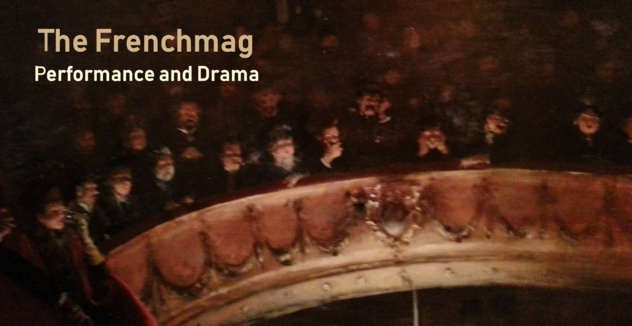Canular n°18 - 2 - Pièces de Charles-Simon FavartNiveau moyenRetrouvez les véritables titres des pièces de Favart. Attention aux pièges tendus par notre farceur de service !
Les Deux Tunnels
La Poire de Bezons Le Cale-bourgeois La Chercheuse de cris La Fête des Saints Clous Le Prix de sa terre L'Hippo. est par ici Le Toc de village Noix de cajou Les Mamours à la noix Cimetière assiégé Menhir et Beurette Les Dindes dansantes Crouton et Rosette Les Amours de Baston et Bas-se-tiennent La Serre vante mes tresses Minette à la tour Les Trois Soutanes ou Soliman fécond Aneth et Lupin L'Onglet à bords doux La Fée Prunelle ou Ce qui plaît aux cames La Rombière de Salency Le Bel Larsen Réponses ci-dessous. Answers below. 
1734 : Les Deux Jumelles
1735 : La Foire de Bezons 1738 : Le Bal bourgeois 1741 : La Chercheuse d'esprit 1741 : La Fête de Saint-Cloud 1742 : Le Prix de Cythère 1742 : Hippolyte et Aricie 1743 : Le Coq de village 1744 : Acajou 1747 : Les Amours grivois 1748 : Cythère assiégée 1750 : Zéphire et Fleurette 1751 : Les Indes dansantes 1753 : Raton et Rosette 1753 : Les Amours de Bastien et Bastienne 1755 : La Servante maîtresse 1755 : Ninette à la cour 1761 : Les Trois Sultanes ou Soliman Second 1762 : Annette et Lubin 1763 : L'Anglais à Bordeaux 1765 : La Fée Urgèle ou Ce qui plaît aux dames 1769 : La Rosière de Salency 1773 : La Belle Arsène Sabine Chaouche
03/31/2017
Publication: "Creation and Economy of Stage Costumes. 16th-19th century" ed by Sabine ChaouchePublication type: Journal
|
Séminaire "Trajectoires. Méthodologie de la biographie"
Ce séminaire réunit des chercheurs renommés dans le domaine, offrant ainsi une occasion unique d'explorer les approches et les techniques essentielles à la réalisation de biographies rigoureuses. Les participants ont l'opportunité d'échanger leurs idées avec les chercheurs, de discuter des défis méthodologiques et de bénéficier des connaissances approfondies des conférenciers invités.
Our seminar brings together leading researchers in the field, offering a unique opportunity to explore the approaches and techniques essential to the production of rigorous biographies. Participants have the opportunity to exchange ideas with the researchers, discuss methodological challenges and benefit from the in-depth knowledge of the guest speakers. Passez à la vitesse supérieure: cours de français et correction de mémoires de 3e cycleFormations/ TrainingEUROPEAN DRAMA AND PERFORMANCE STUDIES (EDPS)The journal publishes thematic volumes relating to any period through special issues (two issues per year); (printed and online publication by Editions Classiques Garnier). Thematic volumes submitted to the journal are peer-reviewed by the editorial board prior to any publication. Articles can also be sent to external reviewers. The Director and General Editor is Prof. Sabine Chaouche. If you have any queries and want to know more about the peer-review process, please contact her at edpsjournal@gmail.com
|
Login
News
Share this website
List of links
Newsletter subscription
|
|
©The Frenchmag 2010-24, a weekly publication. Creation: 08-2010
Country: United Kingdom Publisher: Sabine Chaouche, Oxford, UNITED KINGDOM Contact: sabine.chaouche@gmail.com This website was created and is owned by Sabine Chaouche |
||

















